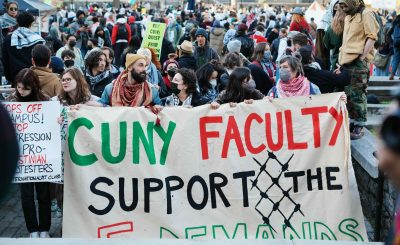
Husna Hassan
For years elected officials have been trying to reduce the tuition in CUNY colleges. In recent years there was a movement that was titled, “Make CUNY Free Again!†In this movement, officials provide reasons as to why the City University of New York should be completely free. The first reason free-cuny.org states is, “It used to be free—when CUNY was white.†CUNY colleges used to be free for only qualifying city students from its institution in 1847 until 1976, when a city fiscal crisis led to change. In 1976, the city imposed tuition because of where the students were from.
While over the years qualifying for free tuition did involve excellent based criteria, maintaining tuition affordability was a top priority, but the 1975 crisis changed everything. Budget cuts and ever-escalating tuition followed. At this specific time the city was on the verge of bankruptcy.
Free CUNY also goes on to state that now when 85% of the students are color, they deserve the same tuition as it was back then. Another reason the movement demonstrates is to give everyone a fair start. To support this it claims, “Education should be a human right, not a luxury just for those who can afford it.†Free CUNY also states that, “A free CUNY is possible†and will let students succeed. The last reason free-cuny.org wraps up with is, “Dozens of countries have free higher education, why not NYC?†They go on by saying that New York City is the wealthiest city in the wealthiest country in the world so, why can’t they do it.
CUNY has been facing many problems. The New York Times states, “On the City College of New York’s handsome Gothic campus, leaking ceilings have turned hallways into obstacle courses of buckets. The bathrooms sometimes run out of toilet paper. The lectures are becoming uncomfortably overcrowded, and course selections are dwindling, because of steep budget cutsâ€. This all leads to the budget problems that keep decreasing over time. The Times continues to claim, “Since the 2008 recession, states have reduced spending on public higher education by 17 percent per student, while tuition has risen by 33 percentâ€. Colleges rely on state funding but have suffered the results of repeated cuts over time. Students then have no choice but to pay more.
The members of the city council want to take stand in this specific subject but there are issues that stand in the way. According to Gotham Gazette, “Brooklyn Council Member Inez Barron, chair of the Council’s higher education committee, introduced the bill in April.†The committee held a hearing on the bill on June 16, where Barron said, “College should be a right that is part and parcel of a commitment we make to provide free public education in grades K to 12.†This so-called commitment was extended for the majority. The article also mentioned that sometime early last year in 2019 President Obama mentioned the “America’s College Promiseâ€. Since then this was recognized better as a national scale.
All this has been raising many questions of all sorts. In an article on Inside Higherd by John M. Burdick states that this significant issue is having a huge role on social media. Burdick states, “New York is the first state in the nation to offer free two-year and four-year public college to its residentsâ€. This is because Governor Cuomo signed the Excelsior Scholarship bill that will officially begin this fall for families who make under $125,000 in annual household income. This is the first step towards making education applicable for the middle class and those who cannot afford higher education.
In recent days, students are trying their best from their side by organizing rallies and pep talks. On the twitter page of @makecunyfree there are tweets about specific rallies that were held. One of the rallies a few months ago was aiming for seven thousand dollars and freeing CUNY and the PSC contract rally. These students claim they are doing the best they can on their part but need officials to step up their game and to do it quickly.



